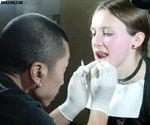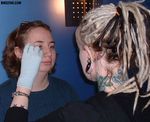Gentian Violet
Jump to navigation
Jump to search
Gentian violet is a mildly antiseptic dye derived from pararosaniline that has positive properties as a bactericide and fungicide. Mixed with water, it can be used (with the aid of a toothpick) to mark piercings (less expensive than using a single-use surgical marker, which often contain gentian violet themselves), although in rare cases it can "tattoo" the tissue if it is pulled into the fresh piercing or applied on ulcerative or flayed (and scarred) skin.
Gentian violet can be used in a solution to treat yeast infections and thrush.
The USDA notes that Gentian Violet is only for topical use, and should not be swallowed.
Occlusive bandaging should not be used after applying Gentian Violet over the skin, or it may cause localized irritation.

